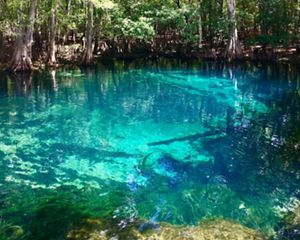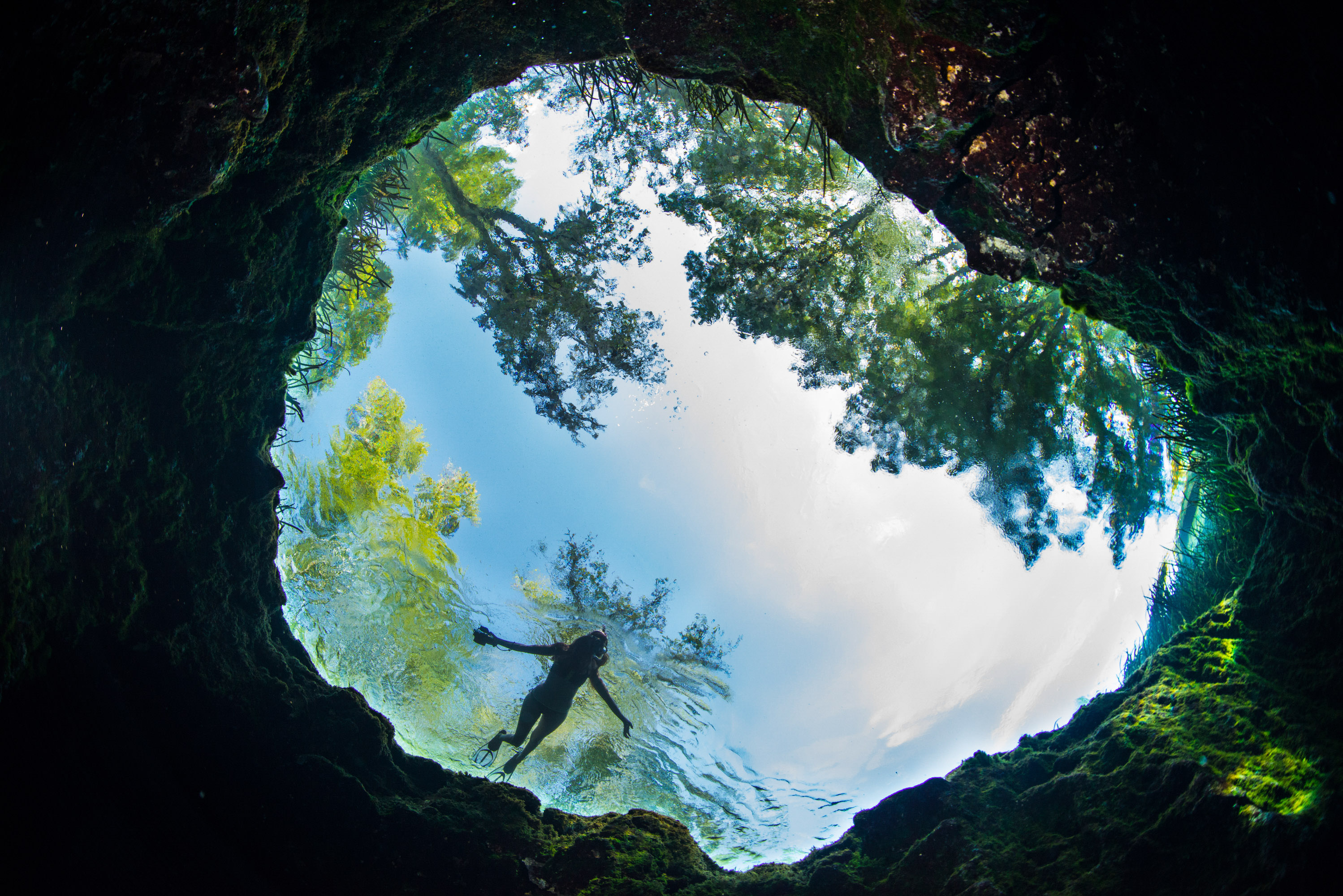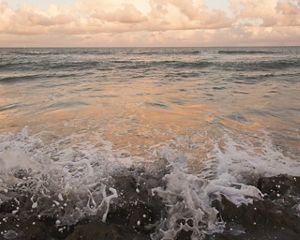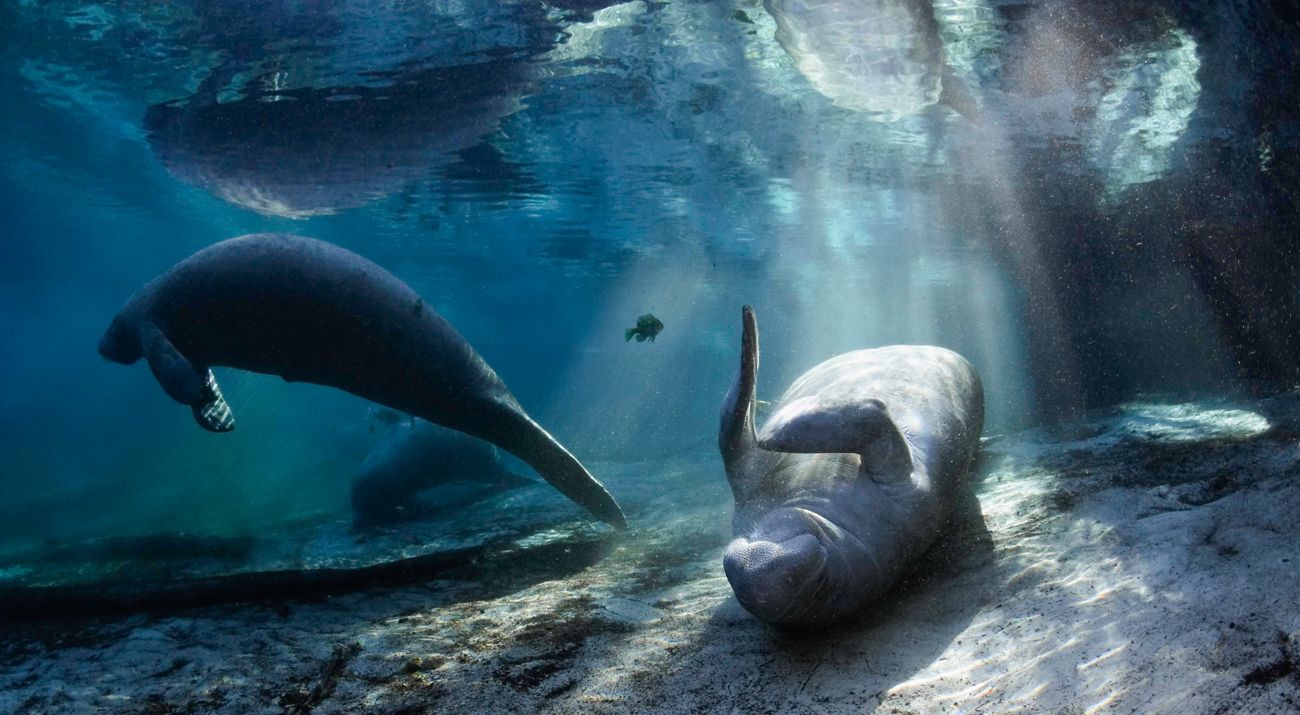
Florida Manatee: Gentle Giants Need Support
Why healthy waterways are critical for manatees and what we're doing to protect them.
The manatee is a Florida icon, but it faces several serious challenges, especially the need for healthy, connected habitats.
The West Indian manatee ranges from Florida through coastal Texas and south to the Caribbean and Central and South America. In warmer months, they may travel up the Atlantic coast into Georgia and the Carolinas. The Florida manatee is a subspecies of the West Indian manatee, with populations concentrated in Florida waters.

Facts About Florida Manatees
- Diet: Seagrasses and aquatic vegetation
- Habitat: Coastal areas, springs, rivers
- Size: 10 feet long and 1,200 pounds
- Lifespan: 60 years
- Nickname: Sea cow
- Conservation status: Threatened
Despite their size, they have relatively little body fat, so in cooler months, they migrate to warm waters, often in a large group called an aggregation. Manatees give birth every 2-5 years and calves will stay with their mothers for up to two years. In 2017, manatees were downlisted from endangered to threatened by the U.S. Fish and Wildlife Service, but they are not out of danger.
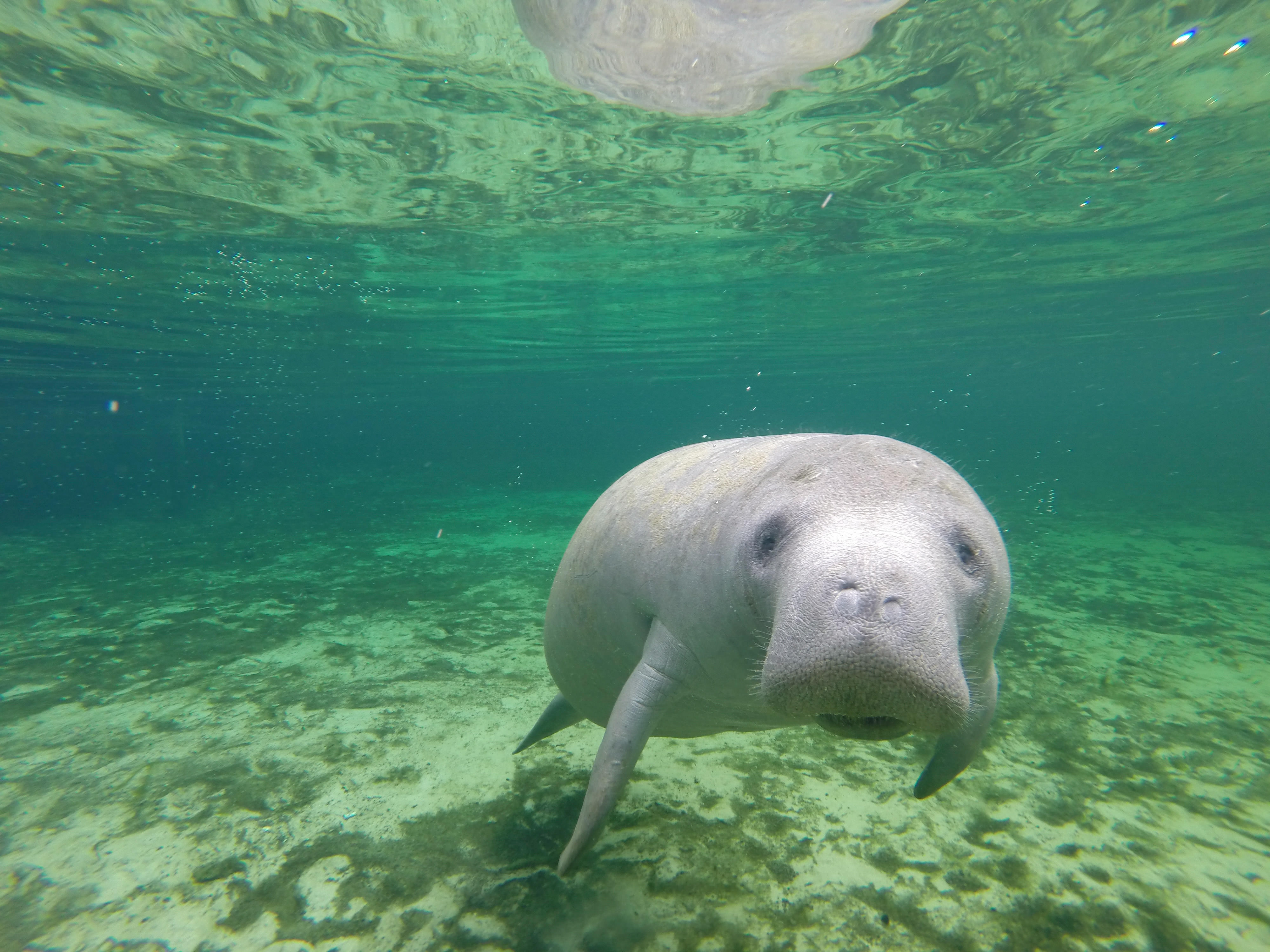
Quote: Anne Birch
As herbivores, manatees depend on sufficient expanses of healthy seagrass beds and other aquatic vegetation to survive. Degraded water quality in estuaries has resulted in significant and detrimental loss of habitat.
Manatees Face Challenges: We Work to Help
Florida manatees face a number of threats to their survival. Fortunately, we're working with scientists and partners on solutions that will help them thrive. Here are a few of the biggest challenges facing the Florida manatee.
Challenge: Dependable access to warm water
Since manatees don't have as much body fat as you might think, they need to spend time in warm waters. Many manatees gather in Florida’s springs during the cooler months, attracted by the consistent water temperatures in the 70s.
Solution: TNC has teamed up with the Warm Mineral Springs Working Group to provide a safe, warm-water refuge in Sarasota County, free from boats that can be dangerous for manatees.
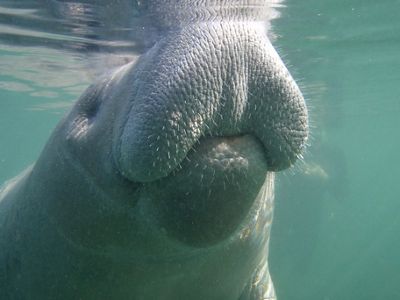
Challenge: Sufficient food sources
Manatees depend on sufficient expanses of healthy seagrass beds and other aquatic vegetation to survive. Yet seagrass beds are dying in many estuaries throughout Florida due to degraded water quality in estuaries. It's a heartbreaking fact that manatees are dying from starvation, especially in the Indian River Lagoon along Florida's east coast.
Solution: TNC is working with federal, state and local governments on policies and funding to address immediate actions that improve water quality and manatee recovery efforts at the federal and state agencies.
Challenge: Unrestricted, connected waterways
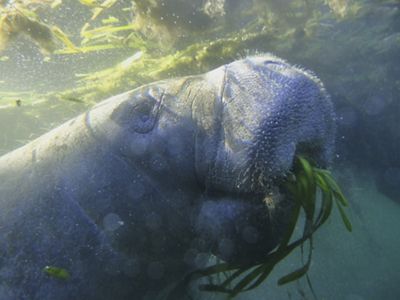
Obstructions or restrictions, like sediment buildup, create a life-threatening issue for manatees. To help manatees survive for future generations and increase their population, it’s essential that their freshwater and marine habitats be reconnected, and remain connected.
Solution: In partnership with the State, manatee access to warm-water habitat is being improved. We are working to remove excessive sediment, restore natural creek depths and improve the banks to reduce erosion and sedimentation in Warm Mineral Springs and Salt Creek for more than 100 Florida manatees that find refuge here during cold spells.
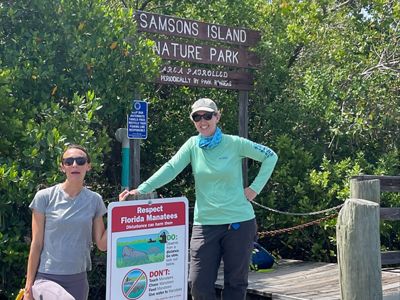
Threats to Manatees Are Ongoing
In addition to the need for access to consistently warm spring waters in the winter, manatees face habitat destruction, canal locks, flood gates and dams. Boat strikes continue to harm manatees, and they are threatened by entanglement in fishing gear and traps. Our focus on freshwater springs and coastal protection and restoration will help to support the manatee’s survival.
Support Our Work
Help us continue our conservation work in Florida to protect wildlife like manatees and the critical habitats they need.
